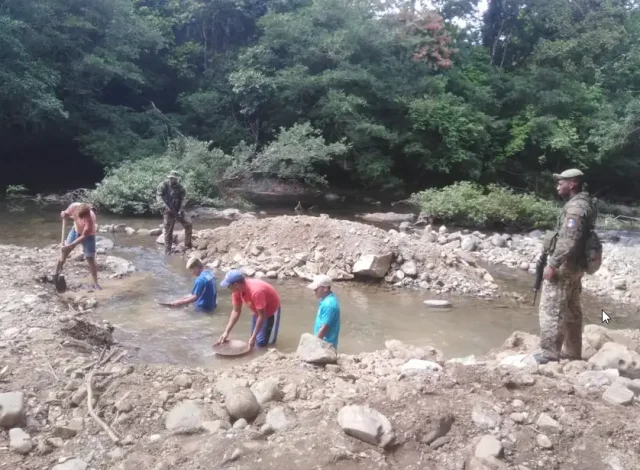Illicit Groups Pounce on Vacuum, Deprive Nation of Tax Revenues
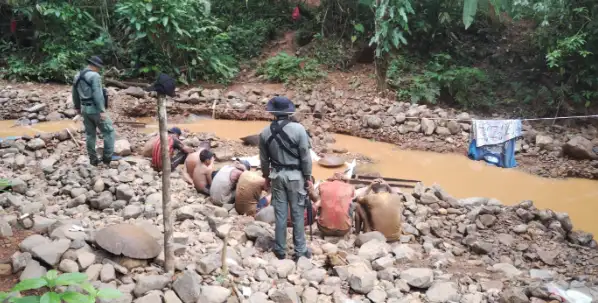
In the last year, illegal mining has surged dramatically across Panama. Near the Cobre Panamá mine, suspended since November 2023, the number of illicit operations has skyrocketed from 60 in July 2023 to more than 250 in March 2024. The Panamanian Chamber of Mining (Camipa) revealed these troubling figures in July 2024 at the International Forum on Mining and Strategic Metals for Sustainable and Inclusive Development, held in Panama City.
Maria Eulalia Silva, executive president of the Ecuadorian Chamber of Mining, stressed the solution: “To combat illegal mining, we must promote and support formal, responsible mining. This is the only way to protect our natural resources and ensure long-term benefits for local communities.” Driving away foreign investment and responsible companies leaves Panama’s rich metal and mineral territories vulnerable to criminal groups, escalating crime and environmental destruction.

According to Camipa estimations, the Panamanian government is losing around $12 million annually in tax revenues due to illegal mining at Cobre. Recognizing the gravity of the situation, Panamanian authorities have taken steps to address the issue. In early July, for instance, newly elected President José Raúl Mulino ordered a “strict environmental audit” of the abandoned mine, with the oversight of local citizens.
Forbidden Fruit
At the forum, Camipa asserts that Panama has the potential to lead the mining sector with a focus on energy transition and environmental responsibility. With thoughtful, clear, and accommodation regulations, Panama could benefit from mining revenues without sacrificing sustainability.
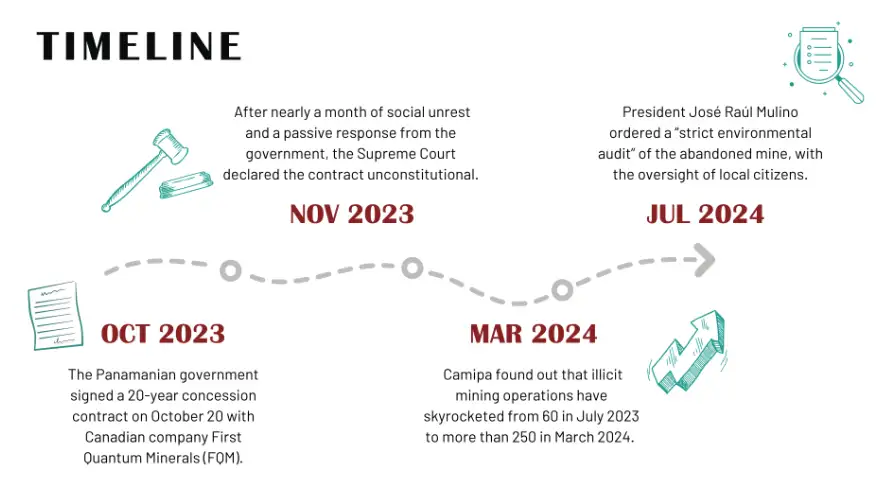
Camipa estimates that Panama could formally develop seven strategic copper and gold mining projects, including Cobre Panamá. Over the next 11 years, these projects could generate $7.12 billion in revenue, with $1.87 billion going to the government.
Organized crime is already active in the Darién border region, where they control the trafficking of people, drugs, and other illicit goods. Without decisive action, criminal groups will poach Panama’s mineral wealth, reaping the rewards of the gold and other metals beneath the soil.
One does not need to look far to see that illegal mining groups thrive when legitimate companies abandon their operations. In May 2024, media reports revealed that members of the Gulf Clan had taken over a mine previously abandoned by Canadian company Eco Oro in Santander, Colombia.
The Escalating Environmental Crisis
At the end of 2023, Panamanians protested against alleged environmental damage caused by mining. The protests exploded after a 20-year concession contract was signed on October 20 with Canadian company First Quantum Minerals (FQM). After nearly a month of social unrest and a passive response from the government, the Supreme Court declared the contract unconstitutional.
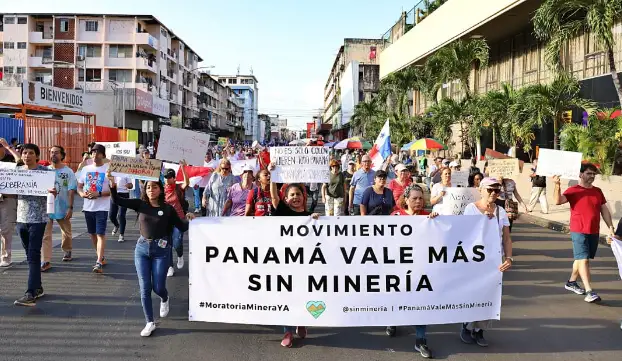
Then President Laurentino Cortizo’s sole proposal was to call for a public referendum. However, the Electoral Tribunal rejected the idea, citing unfavorable conditions, such as social unrest and fiscal constraints. To ease tensions and halt the mass protests that were interfering with transport, the government quickly shut down the mine.
Despite authorities promising an orderly dismantling of the mine, Cortizo’s term ended without significant progress in that direction. Alejandro Chambi, the mine’s environmental manager, warned that the closure could take up to 15 years and, if not done rigorously, trigger an “environmental catastrophe,” including water contamination.
For months, FQM representatives and environmental advocates have raised concerns about the risks posed by the abrupt closure. No monitored, systematic closure process has been initiated, and 121,000 tons of extracted copper concentrate have been left exposed to the elements, posing significant environmental risks.
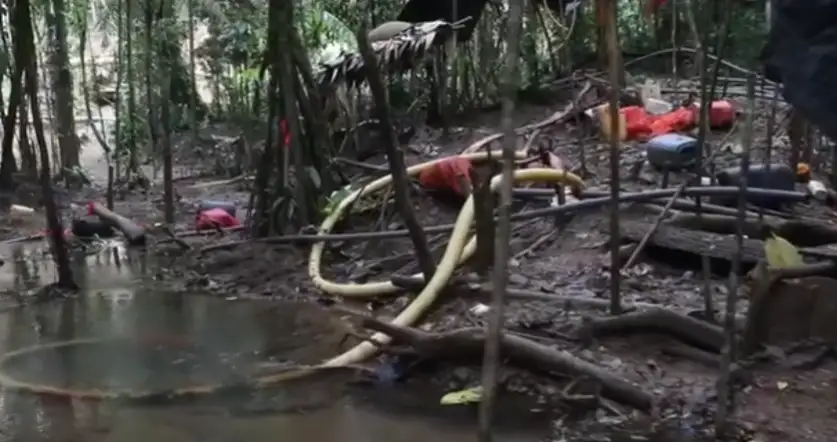
Moreover, illegal groups are now using toxic chemicals such as cyanide and mercury to extract metals. During a September 2023 raid on illegal mining operations in Darién, authorities found electric generators and machinery used to erode the land, along with fuel reserves to power them.
Activating the Economy, Preventing Criminal Takeover
The economic impact of the mine closure is likewise significant. Minera Panamá accounted for 5 percent of GDP and employed 4,000 workers. For Panama, the economic fallout must be considered alongside the environmental risks.
To avoid further harm, authorities must make proactive decisions. When discussing an orderly mine closure and transition, they must move away from populist rhetoric and focus on genuine, long-term solutions that involve the private sector. Abandoning the mine without oversight simply attracts criminal groups and deepens the country’s troubles.
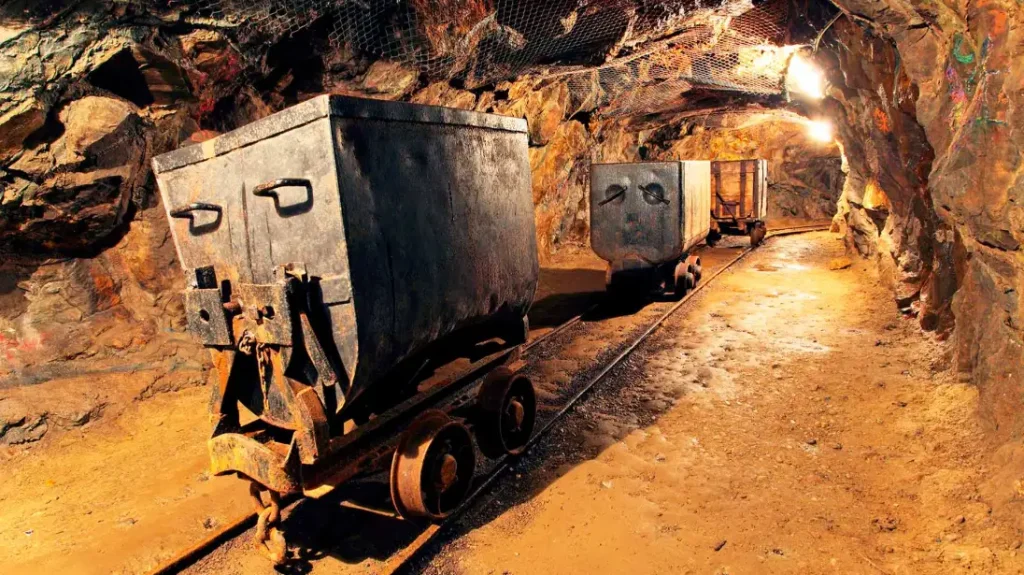
Public-private partnerships or creative solutions are essential to revitalizing Panama’s economy and keeping harmful actors out. In Europe, many abandoned mines from the post-World War II era have been transformed into amusement parks, museums, hotels, or natural camping sites. Panama can learn from these examples.
Panama’s government has shown a lack of leadership and foresight in handling both the mining and social crises. By opting for a quick closure without a public consultation, they denied citizens the opportunity to understand the economic consequences of ending the mining industry. Meanwhile, criminal groups have tightened their grip on the country’s natural resources. If Panama fails to present a prompt solution, the environmental debt and social crisis caused by the expansion of criminal influence will come at a steep price.
The opinion of this article is foreign to Noticiero El Vigilante




